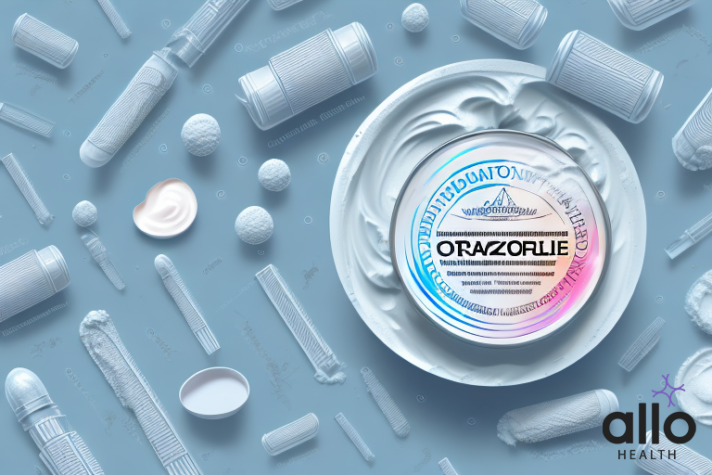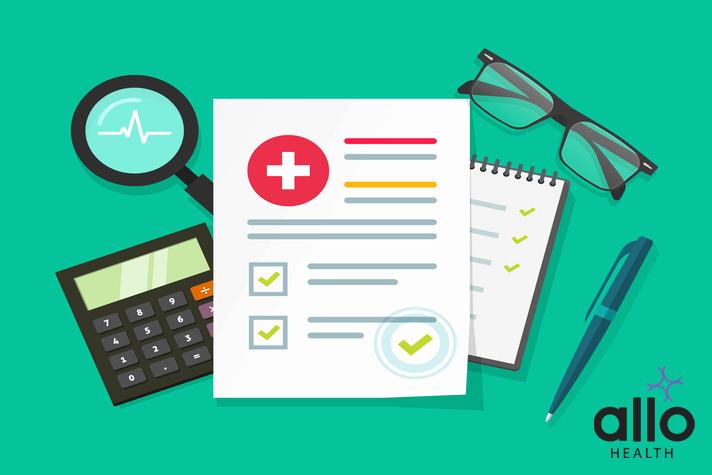Uses Of Itraconazole, Ofloxacin, Ornidazole & Clobetasol Propionate Cream

Allo Health is dedicated to personalized well-being, offering support and trusted information tailored to individual health goals. The platform emphasizes human-generated content, led by a distinguished medical team of experts, including physicians and sexual health specialists. Their commitment to credibility involves rigorous fact-checking, authoritative research, and continuous updates to ensure accurate, up-to-date information. Allo Health's unique approach goes beyond conventional platforms, providing expert-led insights and a continuous commitment to excellence, with user feedback playing a crucial role in shaping the platform's authoritative voice.

Dr Sanina Mansoor holds MBBS degree from Yenepoya university,Mangalore.She has 8 years of experience working as a medical officer at various health centres and medical colleges.
Why This Was Upated?
Our experts continually monitor the health and wellness space, and we update our articles when new information became available.
Updated on 30 December, 2023
- Article was updated as part of our commitment to diversity, equity, and inclusion.

"The following blog article may discuss medical treatments and interventions. However, it is important to note that the information provided is for general educational purposes only and should not be considered as a substitute for professional medical advice, diagnosis, or treatment. Always seek the guidance of a qualified healthcare professional for personalized medical advice.
Book consultation
Medical treatments are complex and should be tailored to individual circumstances. The information presented in this blog may not be applicable to everyone, as each person's medical condition, history, and needs are unique. Only a qualified healthcare professional can evaluate your specific medical situation, consider relevant factors, and provide appropriate recommendations for diagnosis, treatment options, and monitoring.
It is crucial to note that self-diagnosis, self-medication, or relying solely on the information provided in this blog for treatment decisions can have serious health consequences. "
Are you struggling with skin inflammation, irritation, or infections? It can be frustrating and even painful to deal with these conditions. But with Itraconazole, Ofloxacin, Ornidazole & Clobetasol Propionate Cream, relief may be on the horizon. This combination therapy offers a potent and effective solution to a variety of skin concerns, from fungal infections to bacterial overgrowth and inflammation.
What Is Itraconazole?
Itraconazole is an antifungal medication used to treat various fungal infections. It belongs to a class of drugs called triazole antifungals and is available in various forms, including oral capsules, oral solution, and intravenous injection. Itraconazole works by inhibiting the synthesis of ergosterol, a vital component of the fungal cell membrane. This disruption weakens the fungal cell membrane’s structure and function, leading to the death of the fungus.
Here are some key details about itraconazole:
Indications: Itraconazole is used to treat a range of fungal infections, including:
- Systemic Fungal Infections: It is used to treat serious systemic fungal infections like invasive aspergillosis, blastomycosis, histoplasmosis, and candidiasis in patients with compromised immune systems.
- Superficial Fungal Infections: It can also be used for superficial fungal infections like tinea infections (ringworm, athlete’s foot, jock itch), and pityriasis (tinea versicolor).
Dosage: The dosage of itraconazole varies depending on the type and severity of the fungal infection, the patient’s overall health, and other factors. It’s usually taken orally in the form of capsules or solution. The dosage regimen and duration of treatment are determined by a healthcare professional.
Administration: Itraconazole capsules are typically taken with a full meal to enhance absorption. The oral solution is usually taken on an empty stomach. The intravenous form is administered in a healthcare setting under medical supervision.
Precautions and Interactions:
- Itraconazole can interact with various medications, including certain antihypertensives, anticoagulants, antivirals, and certain psychiatric medications. It’s important to inform your doctor of all the medications you’re taking.
- Individuals with a history of heart concerns should use itraconazole cautiously, as it can affect heart rhythms.
- It is generally not recommended for pregnant or breastfeeding women, as its safety in these situations is not well established.
- People with liver or kidney concerns may require dose adjustments.
Side Effects: Common side effects of itraconazole can include nausea, vomiting, stomach pain, headache, dizziness, and skin rash. More serious side effects are rare but can include liver concerns, heart rhythm abnormalities, and severe allergic reactions. If any unusual or severe side effects are experienced, medical attention should be sought.
Monitoring: Patients taking itraconazole may require regular monitoring of liver function, especially during prolonged treatment.
Use itraconazole exactly as prescribed by a healthcare provider. Stopping treatment too early can lead to the recurrence of fungal infections or the development of drug-resistant fungi. Always consult a healthcare professional for proper guidance and supervision when using itraconazole or any other medication.
What Is Ofloxacin?
Ofloxacin is a broad-spectrum antibiotic that belongs to the fluoroquinolone class of antimicrobial drugs. It is used to treat a variety of bacterial infections by inhibiting the enzymes responsible for DNA replication and repair in bacteria. This interference with DNA processes leads to the disruption of bacterial growth and ultimately the death of the bacteria.
Here are the key details about ofloxacin:
Indications: Ofloxacin is prescribed to treat various bacterial infections, including:
- Urinary Tract Infections (UTIs): It is commonly used to treat uncomplicated and complicated UTIs caused by susceptible bacteria.
- Respiratory Tract Infections: Ofloxacin can be used to treat respiratory infections like bronchitis and pneumonia caused by certain bacteria.
- Skin and Soft Tissue Infections: It may be prescribed for bacterial infections of the skin, wounds, and soft tissues.
- Sexually Transmitted Infections: Ofloxacin can sometimes be used to treat certain sexually transmitted infections like gonorrhea.
- Other Infections: It may be used for infections in the prostate, gastrointestinal tract, and other body systems.
Dosage: The dosage of ofloxacin varies based on the specific infection being treated, the patient’s age and overall health, and other factors. It is available in various formulations, including oral tablets and eye/ear drops. The dosage regimen is determined by a healthcare professional.
Administration:
- Oral Form: Ofloxacin tablets are usually taken with a full glass of water, and it’s important to take them at evenly spaced intervals to maintain a consistent level of the medication in the body.
- Eye/Ear Drops: Ofloxacin can be used as eye drops for eye infections and ear drops for ear infections. They should be administered according to the doctor’s instructions.
Precautions and Interactions:
- Ofloxacin should not be used in individuals with a history of hypersensitivity to fluoroquinolones or any of its components.
- It may interact with other medications, such as antacids containing aluminum or magnesium, iron supplements, and certain anticoagulants.
- It is generally not recommended for pregnant or breastfeeding women, as its safety in these situations is not well established.
- Ofloxacin can increase the risk of tendon inflammation and rupture, particularly in elderly patients and those taking corticosteroids.
Side Effects: Common side effects of ofloxacin can include nausea, vomiting, diarrhea, stomach pain, headache, dizziness, and skin rash. More serious but rare side effects can include tendon concerns, nervous system effects, and allergic reactions. If any unusual or severe side effects are experienced, medical attention should be sought.
Monitoring: Patients taking ofloxacin should be monitored for adverse reactions and if they experience any unusual symptoms, particularly related to the tendons or nervous system.
Use ofloxacin only as prescribed by a healthcare provider. Using antibiotics inappropriately or not completing the full course of treatment can lead to antibiotic resistance and treatment failure. Always consult a healthcare professional for proper guidance and supervision when using ofloxacin or any other medication.
What Is Ornidazole?
Ornidazole is an antimicrobial medication belonging to the nitroimidazole class. It is primarily used to treat various infections caused by anaerobic bacteria and certain protozoa. Ornidazole works by damaging the DNA of these microorganisms, preventing their growth and replication.
Here are the key details about ornidazole:
Indications: Ornidazole is commonly prescribed for the treatment of the following conditions:
- Bacterial Infections: It is used to treat infections caused by anaerobic bacteria, particularly those in the gastrointestinal tract, gynecological infections, and infections related to surgery or wounds.
- Protozoal Infections: Ornidazole is effective against certain protozoa, making it useful in the treatment of infections like amoebiasis (caused by the parasite Entamoeba histolytica) and trichomoniasis (caused by the protozoan Trichomonas vaginalis).
Dosage: The dosage of ornidazole depends on the specific infection being treated, the patient’s age and overall health, and other factors. It is available in various formulations, including oral tablets and oral suspension. The dosage regimen and duration of treatment are determined by a healthcare professional.
Administration: Ornidazole is usually taken orally with food to enhance absorption and reduce the risk of stomach upset. The oral suspension should be shaken well before use.
Precautions and Interactions:
- Ornidazole should not be used in individuals with a known hypersensitivity to nitroimidazole derivatives or any of its components.
- It may interact with alcohol, leading to unpleasant side effects like nausea, vomiting, flushing, and headache. Therefore, it’s recommended to avoid alcohol during and for several days after ornidazole treatment.
- Pregnant and breastfeeding women should use ornidazole cautiously and under the supervision of a healthcare professional.
Side Effects: Common side effects of ornidazole can include nausea, vomiting, diarrhea, stomach discomfort, headache, and metallic taste in the mouth. More serious but rare side effects can include allergic reactions and nervous system effects. If any unusual or severe side effects are experienced, medical attention should be sought.
Monitoring: Patients taking ornidazole should be monitored for adverse reactions, especially if they experience any unusual symptoms or side effects.
Use ornidazole only as prescribed by a healthcare provider. Completing the full course of treatment is essential to ensure the eradication of the infection and prevent recurrence. Always consult a healthcare professional for proper guidance and supervision when using ornidazole or any other medication.
What Is Clobetasol?
Clobetasol is a potent topical corticosteroid medication used to treat various inflammatory skin conditions. It belongs to the class of drugs known as corticosteroids, which have anti-inflammatory and immunosuppressive properties. Clobetasol helps to reduce itching, redness, swelling, and other symptoms associated with certain skin disorders.
Here are the key details about clobetasol:
Indications: Clobetasol is prescribed to treat a variety of skin conditions, including:
- Psoriasis: It can be used to manage psoriasis, a chronic autoimmune skin condition characterized by thickened, scaly patches of skin.
- Eczema (Dermatitis): Clobetasol may be prescribed to control the symptoms of eczema, which is characterized by red, itchy, and inflamed skin.
- Severe Atopic Dermatitis: It can be used in cases of severe atopic dermatitis that have not responded well to other treatments.
- Lichen Planus: Clobetasol can help alleviate the symptoms of lichen planus, an inflammatory skin condition that often presents with itchy, purple-colored bumps or lesions.
- Other Inflammatory Skin Conditions: It may also be used for various other inflammatory skin conditions, as directed by a healthcare professional.
Dosage and Administration: Clobetasol is available in various formulations, including creams, ointments, lotions, and solutions. The specific formulation and strength prescribed depend on the type and severity of the skin condition. The medication is usually applied thinly and sparingly to the affected area, and the dosage regimen is determined by a healthcare professional.
Precautions and Interactions:
- Clobetasol should not be used on the face, groin, or underarms unless specifically directed by a doctor, as these areas are more sensitive and can absorb more of the medication.
- Prolonged use of high-potency corticosteroids like clobetasol can lead to skin thinning, so it should be used for the shortest duration necessary.
- It’s important to follow the prescribed dosage and not exceed the recommended duration of use, as excessive use can lead to systemic absorption and potential side effects.
- Inform your doctor about any other medications you’re taking, as interactions can occur.
Side Effects: Common side effects of clobetasol can include skin irritation, burning, itching, dryness, and changes in skin pigmentation. Long-term or excessive use can lead to more serious side effects like skin thinning, stretch marks, and increased susceptibility to skin infections. If any unusual or severe side effects are experienced, medical attention should be sought.
Monitoring: Patients using clobetasol should be monitored by a healthcare professional, especially if using the medication for an extended period or on large areas of the body.
It’s important to use clobetasol only as prescribed by a healthcare provider. Overusing or misusing topical corticosteroids can lead to adverse effects. Always consult a healthcare professional for proper guidance and supervision when using clobetasol or any other medication for skin conditions.

Frequently Asked Questions
(1) What is Itraconazole, Ofloxacin, Ornidazole & Clobetasol Propionate Cream used for?
The cream is a combination of antifungal, antibiotic, antimicrobial, and corticosteroid agents. It is potentially used to treat complex skin conditions where there is a need to address fungal, bacterial, and inflammatory aspects simultaneously.
(2) How does the combination cream work?
Itraconazole targets fungal infections by disrupting cell membranes, while ofloxacin combats bacterial growth by interfering with DNA processes. Ornidazole fights anaerobic bacteria and certain protozoa by damaging their DNA. Clobetasol propionate reduces inflammation and itching associated with skin conditions.
(3) Are there any specific conditions this cream is used for?
This cream might be used for skin conditions that involve multiple factors, such as mixed infections or inflammatory responses. Its usage is determined by a healthcare professional based on the patient’s condition and needs.
(4) What precautions should I take while using this combination cream?
Follow your healthcare provider’s instructions carefully. Avoid applying the cream to sensitive areas like the face, groin, or underarms unless directed. Inform your doctor about any allergies or medications you are taking to prevent interactions.
(5) What are the potential side effects of the combination cream?
Common side effects might include skin irritation, dryness, and itching. Long-term use can lead to more severe effects like skin thinning or increased susceptibility to infections. If you experience any unusual symptoms, contact your healthcare provider.
(6) Can I use the combination cream for any skin concern?
No, this combination cream is specifically prescribed by a healthcare provider for certain complex skin conditions. Always consult your doctor before using any medication on your skin.
(7) How often should I apply the cream?
The frequency and duration of application will be determined by your doctor. Follow their instructions carefully to achieve the best results without overusing the cream.
(8) What if I miss an application?
If you miss an application, apply the cream as soon as you remember. if it’s close to the time for the next application, skip the missed one and continue with the regular schedule. Do not apply extra cream to make up for a missed dose.
(9) Can I apply makeup or sunscreen over the cream?
Unless directed by your doctor, it’s advisable to avoid applying makeup or sunscreen directly over the cream. Consult your healthcare provider for guidance on any additional products you can use while using the combination cream.
(10) How long will it take to see results from the cream?
Results can vary based on the individual and the condition being treated. Some improvement might be noticed within a few days, but complete results could take weeks. Patience and consistency are important when using this combination cream.






































